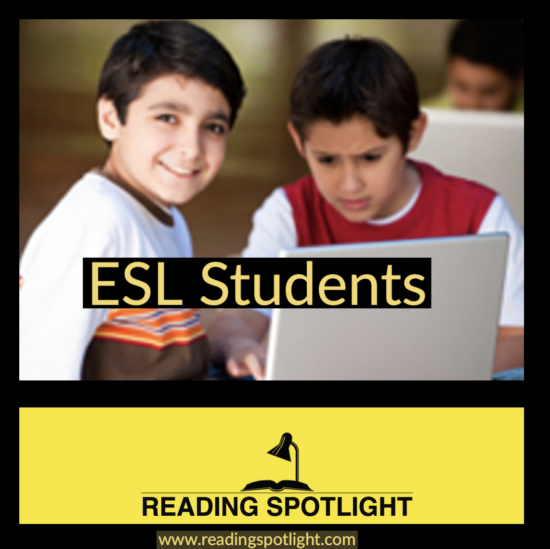Children who speak and understand very little English (English as a Second Language Students) require extra attention and modified activities in American classrooms. Hopefully, a qualified ESL specialist provides intense English instruction for at least part of the school day. Budget cuts in many schools have impacted this instruction, however, so sometimes a classroom teacher finds that (s)he alone must help.
Here are a few suggestions that might aid ESL students:
1. Vocabulary—The vocabulary load is the greatest problem facing the ESL student. Speaking slowly, repeating important words or expressions, and then asking the ESL student to repeat them is an effective way of improving vocabulary. Anything with pictures is obviously of maximum benefit. Practice pronunciations often. Ask all students to repeat the words together, some individually, clearly and slowly. Then ask the ESL student to try. Inclusion of vocabulary words in sentences with common words that most children know is also helpful.
2. Partner—An understanding peer can lead an ESL student through lessons and through class activities throughout the day. Copying is fundamental to learning, and this provides some individual attention. Change partners sometimes to provide a “rest” for both.
3. Grammar Skills—English is a complex language, and irregular plurals and verb tenses are very common errors in those learning English. Many of our most used verbs have irregular past tenses (say—said, hear-heard, etc.). Correct gently when hearing the error, and ask the student(s) to repeat the sentence correctly. Errors in verb tenses are also common in American children, and immediate, calm correction is vital to learning to speak well. After all, school is the place to learn! When children hear the corrections often enough, proper usage becomes easier. Be sure to praise often when correct usage is exhibited.
Check out our Sets of Grammar Tall Tales, Grammar Sports Stories, Grammar Career Stories, Holiday Traditions Grammar Stories.
The Reading Spotlight Store also has several sets of crossword puzzles the are effective and enjoyable that improve vocabulary, grammar, and spelling.They include:
Irregular Past Tense Verbs Crossword Puzzles
Irregular Plurals Crossword Puzzles
4. English expressions and idioms—These are common expressions that make no sense literally (There’s a frog in my throat.). If there are ESL students in the class, a really fun and helpful activity involves all students drawing a different picture of the literal meaning of an idiom, and then explaining to the class what it really means. This is also helpful to Learning Support students as well as ESL students. Some dictionaries include lists of idioms to help the teacher locate common idioms.
5. Easy Math—Math transcends language. Using lower level workbooks can actually make learning vocabulary easier. Most primary math workbooks include many pictures and simple word problems.
6. Repeat Directions—Check for puzzled facial expressions. Repeat directions exactly, and then, if still not understood, restate using different words. Be proactive on words which you suspect might cause a problem. Ask students to provide the meaning of these words.
7. Examples—When assigning work, be sure that more than the usual number of examples are completed satisfactorily.
8. Extra Time—Allow extra time for answers. ESL students need to translate their answers from their native language into English, and therefore, they need the extra time.
9. Reinforcement Activities—Use many different types of activities to help ESL students practice the new language—listening, speaking, writing, drawing, reading. Using CD versions of picture books is very helpful, as well as enjoyable. Songs for numbers, colors, and body parts are also pleasing learning experiences.
10. Important Expressions—Be sure that students learn how to say important expressions right away.
These include:
Please. Thank you.
I don’t understand.
Please repeat the directions.
I am sick.
May I please go to the restroom?
My name is ________.
What is your name?
Will you play with me?
Please help me.
Be sure to check out Reading Spotlight’s Pinterest ESL board for more ideas.
© Reading Spotlight 2021


